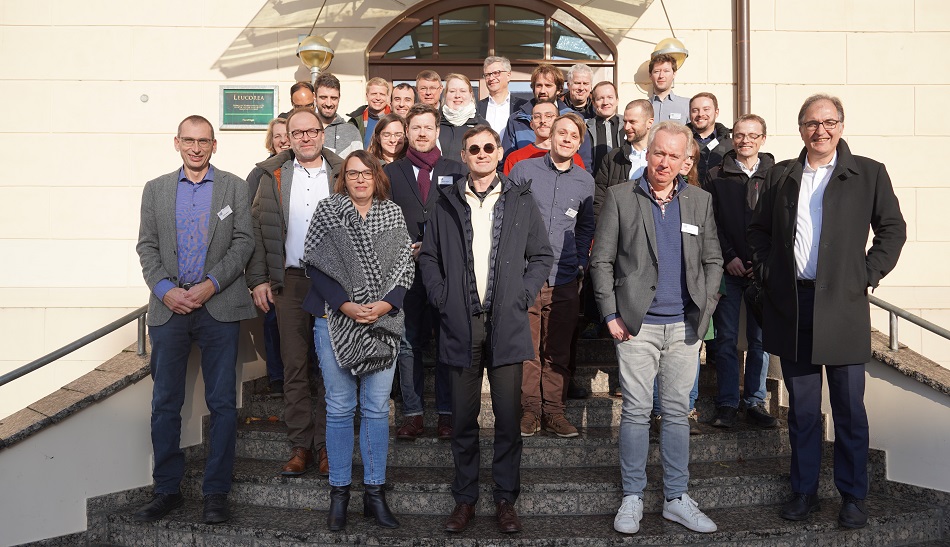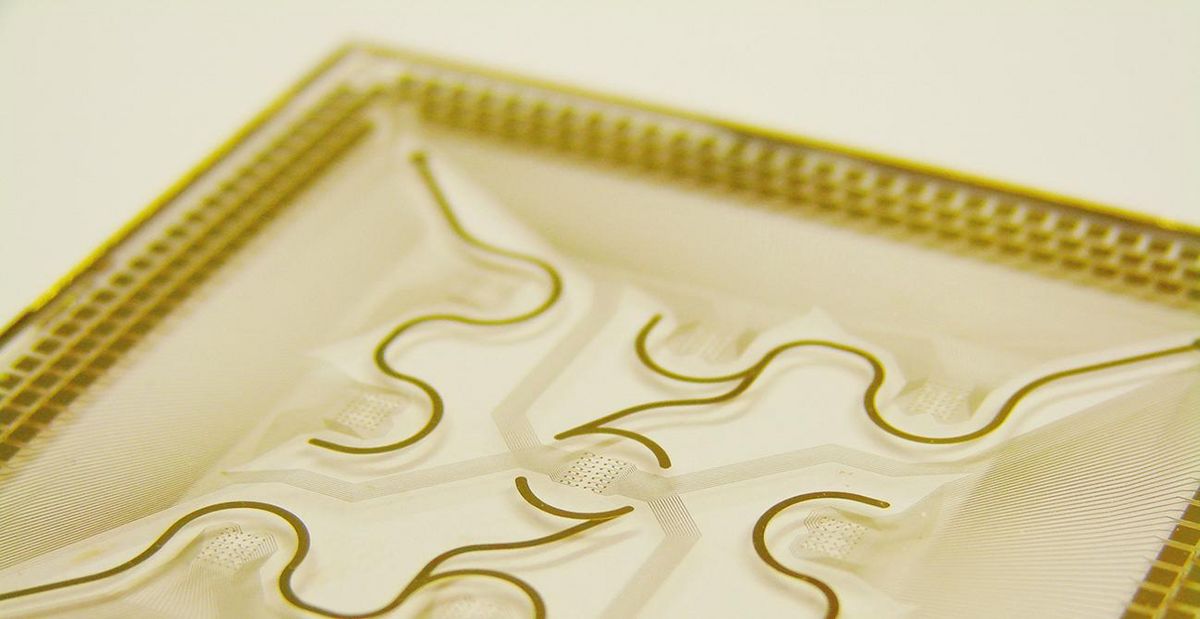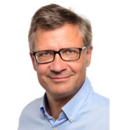The aim of the research group is to investigate the possibilities and limits of integrated, miniaturized synthesis and analytical laboratories. To this end, fundamental work in the fields of chemical microsynthesis and the integration of analytical concepts for inline monitoring of chemical processes in real time will be carried out in an interdisciplinary research network.
Integrated Chemical Microlaboratories (InCheM)
The lab-on-a-chip technology represents an excellent platform for efficiently linking these interdisciplinary research areas. In addition, classical, microstructured flow-through reaction systems will also be included in a comparative way. This approach can provide new insights into the world of microsynthesis, which, in addition to a better evaluation of this technology, should also point to new paths in integrated microreaction technology and chip-based analytics.
Focus of the DFG Research Group 2177
While in focus 1 strategies are worked out to realize new, innovative, chemical syntheses in special microfluidic systems with analytical function, the focus in focus II is on analytical chemistry and the development of corresponding technologies to be able to characterize, control and monitor the syntheses developed in focus 2 in microsystems in real time. In this context, the parameters and effects of scaling these reactions from the macro to the micro scale will also be investigated, including comparison with classical flow-through systems. In contrast to the vast majority of work in the literature, however, the focus is not on “downscaling” already established, simple model reactions, but on research into very recent synthetic concepts with an emphasis on catalysis in microfluidic systems. With integrated analytics and the possibility of real-time monitoring, for example for temporal and spatial tracking of short-lived intermediates, completely new insights for understanding chemical reactions also become possible. As our preliminary work shows, such data, obtained in microsystems with minimal chemical and time requirements, can also be very valuable for the development and optimization of syntheses at the classical macroscale.
Our Research projects
From discrete particle to single cell catalysis
The central objective of project 1 is the development of enabling technologies for the exploration of stereoselective transformations with single catalytic species in solution. The preferred approach is to apply lab-on-a-chip technology to integrate confined reaction vessels and appropriate analytics on a single device. Such integrated chemical micro laboratories should allow the investigation of chemical reactions at unrivaled small dimensions with regard to space, time and chemical consumption. Project 1 builds upon the previous achievements in onchip integration of heterogenized organocatalysis and further extents the concept to whole-cell catalysis. This should open up new avenues to study the diversity of catalytic species using either artificial micro particles or cells. In this context, a special focus is the study of
stereoselective processes in confined nano- to picoliter-scaled reactors.
Project management
Novel chemical tools to elucidate carbohydrate chemistry
This proposal will utilize rapid, data-rich methods for the controlled interrogation of glycosidic bond formation and the nature of the resulting polysaccharides. These studies are only possible due to the prior work of the investigators, where advanced synthetic and analytic tools have been developed which afforded a general yet quantifiable understanding of the underlying chemistry. This understanding will be significantly advanced via the development of robust, high-throughput workflows for online and offline glycan and glycan intermediate analysis in order to elucidate aspects of the underlying mechanistic pathways of glycosidic bond formation. By combining the controlled synthesis platform with mass spectrometric techniques such as liquid-beam MS and IMS/IM-MS, along with DFT calculations, we will probe the identity and proportion of intermediates with respect to experimental conditions. By replacing – or in addition to – HPLC with IMS, we will obtain more information regarding the products/byproducts for each run, such as their mass and shape. In parallel, we will expand our knowledge about the CCS of glycans and glycan intermediates, creating standardized procedures for their investigation and probing the structural influences on the three-dimensional shape of glycans. To increase the impact and amount of data obtained for each sample, we will develop a method for combining IM-MS with fluorescence detection. This will provide an increased level of confidence with regards to product identification and allow for high-throughput analysis.
Project management
Multicatalytic synthesis with 1,3-dipoles in microfluidic systems
The topic of the research project is the combination of photocatalytically generated 1,3-dipoles (as a model for less stable intermediates) with sequential further catalytic (enantioselective) transformations (including Lewis acid, organocatalysis as well as photocatalysis) in a multicatalytic setting. We want to use micro-flow reactions not only as a set-up to improve potential batch-type reactions in terms of several aspects, such as increased productivity etc., but we are aiming at multicatalytic, sequential reactions which show both diastereoselectivity and enantioselectivity and hence require the monitoring of these additional parameters to optimize the corresponding reaction conditions. As the stereochemical outcome of such reactions can not be determined by established chip-MS as endpoint analysis for distinction between the isobaric stereoisomers, our test reactions will be used to further extend the tools of “chip laboratories” by setting up an inline separation technique before MS detection. This challenging merger of stereoselective reactions with a high-speed in-line (chiral) chip chromatography/MS system is proposed to offer new insights in reaction and mechanistic analysis and method optimization.
Based on the great promise of photocatalysis for multicatalytic processes and on the robust, photocatalytic high yielding access to versatile nitrone intermediates from nitroalkanes and tertiary amines under mild conditions, which was successfully developed during the 1st funding period, we plan now to exploit their reactivity towards the (asymmetric) synthesis of valuable, multifunctionalized heterocycles and acyclic building blocks in sequential one-pot, respectively flow combinations with catalytic transformations. Apart from photocatalytic transformations of in situ generated nitrones and nitrile oxides, we will focus on multicatalytic combinations with stereoselective cycloadditions of nitrones. Two reactions (metallo- and organocatalyzed) have been selected for this purpose: the Cu-catalyzed Kinugasa reaction with terminal alkynes which provides access to polyfunctionalized, highly valuable β-lactams as well as an organocatalytic NHC-mediated formal [3+3] cycloaddition with unsaturated aldehydes to furnish functionalized γ-amino acid derivatives which originate from a ring opening of an initially generated, but instable oxazinone cycloadduct.
Project management
Continuous flow synthesis of sulfur heterocycles via cycloaddition reactions of photochemically generated transient thioaldehydes
The objective of this grant proposal is the development of a continuous flow process for the photochemical generation and ensuing synthetic transformations of thioaldehydes. We intend to generate these highly labile reagents from phenacyl sulfides under UV-light irradiation in a flow reactor. Subsequently, we plan to convert these reactive synthetic intermediates in thia-Diels-Alder reactions with electron-rich dienes, in ene reactions with alkenes and in [2+2]-cycloaddition reactions with allenoates to produce valuable sulfur heterocycles as products. Based upon their mostly transient nature thioaldehydes have thus far been underutilized in organic chemistry and potential synthetic applications underdeveloped accordingly. With a powerful continuous flow process successfully implemented we strive to fully exploit their synthetic potential as highly versatile reagents.
Project management
Mechanisms of organic reactions in complex environments and confined volumes elucidated by laser desorption mass and ion mobility spectrometry
- Reaction rate acceleration in confined volumes:
Quite a large number of reactions occurring in droplets and thin films show surprizingly large rate accelerations. While the factor of acceleration of a number of chemical reactions in small microdroplets and thin films, i.e. confined volumes, has been observed in the range between 5 and 106, in most cases the mechanisms of the acceleration are only poorly understood. One of the main objectives of the project is to investigate organic model reactions in microdroplets and thin films with respect to reaction acceleration in confined volumes employing IR desorption mass spectrometry and ESI in combination with time-of-flight mass spectrometry and IM spectrometry. Theory (DFT-calculations) will help to understandand interpret the experimental data. - IR-MALDI-MS and IR-MALDI-IM spectrometer coupled to micro chips:
In the first funding period one of the key scientific achievements in the central project in collaboration with the WG Belder was the successful coupling of microfluidic chips and mass spectrometry via free liquid beams and IR matrix assisted laser dispersion / ionization (IR-MALDI). Based on these encouraging results, we intend to heavily use IR-MALDI-chip-MS technology and to further extend this approach and couple LOC systems also with drift tube IM spectrometry. IR-MALDI in combination with microbeam technology can be regarded as a complementary technique to electrospray ionization. Both will be employed in the project. Especially the possibility to monitor chemical processes at high flow rates makes this approach very appealing for the detection of short-lived intermediates generated in continuous flow reactions. In this context, the high sampling frequency of drift tube IM spectrometry instruments compared to rather slow atmospheric pressure interface MS systems is another attractive feature of IM spectrometry. With regard to IR-MALDI and liquid beam techniques coupled to IM spectrometry, the collaboration between the WG Abel and WG Löhmannsröben provides strong synergies. These technologies will be applied in the context of monitoring transient intermediates and product distributions of fast organic reactions by mass spectrometry. - Application of technologies to projects of cooperation partners within the research unit:
After having developed enabling technologies for the investigation of complex organic and organocatalytic chemical transformations, this toolbox together with theory will be applied and extended to study other complex systems together with cooperation partners (WG Belder, WG Schneider, WG Seeberger and WG Pagel) in the research unit in the second funding period.
Project management
Microfluidic trapping of 3D spheres in microfluidic reaction systems for real-time biosensing of flow chemistry derived compounds
The topic of the research project in the 2nd funding period will be the combination of a 3D organoid-based multiparametric real time biological activity monitoring and the adaptation of the microfluidic lab-on-chip design (1st funding period). Coupling an inline real time bioanalysis under a high degree of environmental control (temperature, flow-rate / shear stress etc.) for reading out physiology of complex 3D cell aggregates under flow will be the challenge. During the 1st funding period, we were successful in establishing a fast, sensitive real-time analytical tool based on viable 2D cell monolayer for impedimetric monitoring biological activity of chemical synthesis educts/products. Now the on-chip microfluidic trapping of 3D organoids i.e. organotypic cardiac spheres that recapitulate the in vivo situation will be the main research topic. The drug discovery shall be realized on a microfluidic chip to combine the advantages of 3D cultures with the ultra-fast reaction time and compound distribution Thus, the microfluidic chip consists of two levels (i) for the microsynthesis area, the μFFE field and the microchannels connecting the 3D microcavity-electrode as a multi-well format on the (ii) second level including positioning channels for the 3D cultures. Therefore, the novel microcavity array structures with at least four electrodes per microcavity (200 – 500 μm length, 130-330 μm depth) will be produced in fused silica substrates using the innovative technology of selective laser etching. These integrated microcavity structures on the multilevel microfluidic chip will be contacted by a hybrid multiplexer electronic board, which is based on the impedance multiplexer board developed during the 1st funding
period. For the synchronous multimodal measurement of the biological targets, the electronic board will be extended by an electronic module for the field potential recording. The extended multimodal system comprises, a switch between impedance spectroscopy, field potential recording, and photonic monitoring of 3D cardiac clusters under fluidic conditions, which allows to analyse physiological biomechanical and electrophysiological properties in real-time. Thus, the microfluidic chip for viable cell monolayer from the 1st funding period will be extended by a novel module for 3D organoid trapping and real time hybrid live-sensing of 3D spheres in microcavity arrays based on experiences demonstrated in the past.
Project management
FluxProbe – Using biocatalysis for probing the functional spaceof single microbial catalysts
Project 7 is focusing on the quantitative analysis of biocatalyst functioning and reactivity with single cell resolution (see figure 2). Single cell reaction products will be analyzed and quantified for the first time via mass spectrometry analytics for mapping the functional space of individual biocatalysts and giving access to single-cell specific yields and rates. Exploiting the analytical power of mass spectrometry, 13C-isotope-labelled substrates will deliver in-depth information on the metabolic network operation of the biocatalyst and massively enrich the derived quantitative data on rates, yields and selectivity. In combination with global physiological data such as specific growth rates of the catalysts, it will be possible to create a holistic picture of the condition-dependent functional state of a biocatalyst and to connect population reactivity with its functional structure. The exploration of previously unknown links between reactivity, metabolic state and extracellular parameters will be enabled through the stringent control of reaction conditions by the physical properties at microfluidic scales. The integrative analytical concept of project 7 is far beyond current approaches in single cell research for biocatalysis, which is restricted by the limited technological capabilities of optical cell analysis. To reach these goals, individual biocatalysts have to be decoupled from populations via microfluidic bioreactors to perform true single cell catalysis. Integrated LOC-based concepts are necessary to process and lossless transfer the small amounts of reaction products to highly sensitive MS analytics. The project benefits from previous achievements of the WG Schmid in terms of integrated microbioreactor design, fabrication and application (Envirostat), analytical concepts for microbial single cells, biocatalyst development and analytical biochemistry based on 13C-labelled substrates. All these developments represent landmarks in single cell biocatalysis research and focused on enabling the analysis of single microbial biocatalysts via MS analytics, which will be performed within the frame of this project. However, integrated analytical concepts powerful enough to analyze single cell reaction products via mass spectrometry are not available yet. This is changing through the massive advances in Chip-MS interfacing during the first funding period of the research unit In-Chem. Novel analytical possibilities for single cell analysis arise from the realization of performing organocatalysis in on-chip generated aqueous microdroplets and lossless interfacing of the chip with mass spectrometry analytics. In terms of cell analysis, the WG Belder recently demonstrated the analysis of the enantioselectivity of only a few hundred cells. By integrating microfluidic systems that facilitate stringent control over reaction conditions and with the developed miniaturized analytical approaches, the conditionsdependent catalytic performance of single cells are now in analytical reach. The application of these developments to single cell catalysts will evolve biocatalysis research to the next level. We will make use of the Envirostat platform to perform catalytic transformations with a few to one isolated single cell and couple these with highly sensitive MS analytics. Also microdroplets as confined batch bioreactors will be evaluated as a promising static alternative to flow-based single cell catalysis.
Project management
Advanced technologies for integrated micro systems
In continuation of the very successful mission during the first funding period, project 8 will carry out research to develop enabling technologies in the focus of the research unit. It furthermore provides technological support and access for all partners of the research unit. Accordingly, project 8 acts as a technological glue for the whole research unit and serves as synergistic link between the synthetic and analytical chemists. In the second funding period the scope of the research activities and objectives will focus on:
- Analysis of stereoisomers and enantiomers in segmente micro flow synthesis
- Fast inline monitoring of complex reaction mixtures
- Development and prototyping of tailor-made microfluidic chip systems
These research topics address the technological demands of the whole research unit identified during the first funding period. Reading the chemical contents of nano- to picoliter-sized reaction chambers is challenging, especially with respect to stereoisomer or even enantiomer differentiation. Building up on the very successful achievements in chip chromatography, this technology will be further developed to read the chemical contents of single droplets on-chip. Moreover, the challenge of fast inline monitoring of complex reaction mixtures will also be faced by the hyphenation of chip-based HPLC and drift tube IMS. Regarding microchip development and prototyping during the first funding period, a major topic was the integration of novel microelectrode configurations in microfluidic chips especially based on 2D designs. The second funding period will address the research and technology development of 3D microstructures and appropriate microelectrode arrangements on these 3D structures integrated in microfluidic chips for the subprojects handling with droplets, single cells, (bio)catalysis and 3D tissues. The challenge of this approach will be finding and investigating the achievable surface topology of the laser-structured fused silica substrates concerning the microchannels and cavities for optimal physical-chemical properties with regard to microfluidic conditions (flow rate, wall and surface shear stress etc.). The research in this technology field will be a strong benefit for all subprojects and the therein described tasks.




